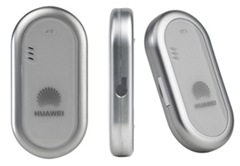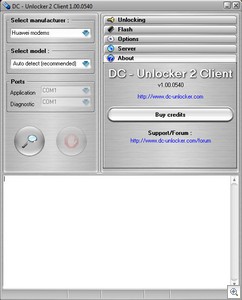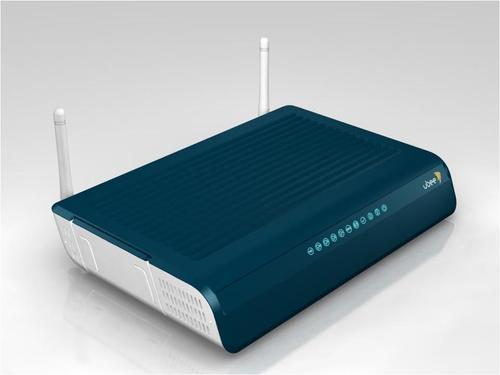
Clearwire just launched Rover, a no-contract service that offers unlimited WiMax goodness for $5 a day, $20 a week, or $50 a month, along with two new WiMax modems. Yep, get ready to start topping up your 4G.
The service is launching in all of Clearwire's WiMax markets with two modems: a $99 USB stick called, um, the Rover Stick, and a $150 puck called, uh, the Rover Puck. The latter of the two can service as a WiMax hotspot for up to eight devices—it has Wi-Fi b/g/n and can simultaneously run 2 SSIDs—though neither have any 3G connectivity.

Here, for your reference, is a map of Clearwire's coverage.
Users will be able to buy new service in some retail stores, like Best Buy, or online, in $20 and $50 increments. Rover, they explain, is "designed for digitally addicted youth who refuse to settle for long-term contracts." Don't you call me an addict, Clearwire. [Rover via Slashgear]
Clearwire Introduces Rover: Instant Gratification to the Internet Addicted
Nation's First Pay-As-You-Go 4G Mobile Broadband Service
Unlimited Usage for Just $5/day, $20/week, $50/month
Redefines "Friends with Benefits" with Rover Puck(TM)
Rover Stick(TM) Available for Those With Commitment Issues
KIRKLAND, Wash., Aug 30, 2010 (BUSINESS WIRE) –
Clearwire Corporation (NASDAQ:CLWR) today unveiled Rover(TM): the nation's first pay-as-you-go 4G mobile broadband service for tech-savvy Gen Y customers. The Rover brand is designed for digitally addicted youth who refuse to settle for long-term contracts, overpriced internet service, or speeds slower than what they've become accustomed to at home.
Rover is available in all of Clearwire's 49 4G markets across the U.S. at rover.com. Rover is also available at CLEAR stores, Best Buy stores and select independent wireless dealers in Houston and St. Louis.
"Simple, commitment-free wireless services are wildly popular with the Gen Y crowd, and Rover provides them with the first pay-as-you-go unlimited mobile internet offering at 4G speeds," said Mike Sievert, chief commercial officer for Clearwire. "We've built Rover from the ground up with products, pricing and features designed specifically to serve a younger market who knows how you get connected is just as important as where. Expanding our offers to meet this underserved segment is an important new business opportunity for Clearwire as we continue to extend our leadership in mobile broadband."
"The opportunity for pay-as-you-go mobile broadband should not be underestimated," said Carrie MacGillvray, program manager and wireless analyst at IDC. "Prepaid – or pay-as-you-go – data provides an option for consumers to experiment with the power of mobile broadband without being saddled with a two-year commitment. A prepaid mobile broadband service can offer consumers the ability to access and share Internet service, at home or on the go, in an affordable way."
PUCKS AND STICKS
Friends with Benefits
Rover's flagship device is the Rover Puck: an ergonomically designed portable Wi-Fi hotspot that lets you share broadband access, or "Puck", with up to eight devices at home, out on the town or nearly anywhere the feeling strikes you. The Rover Puck can easily slip into a purse or backpack and serve as an on-the-go broadband access point for devices such as laptops, netbooks, the iPad(TM), the iPod touch(R), smartphones, PSP(R) systems, game consoles, and Wi-Fi enabled digital cameras, among others. Users have the option to connect up to eight Wi-Fi enabled devices simultaneously.
The Rover Puck features mobile download speeds of three to six mbps, with bursts over 10 mbps (up to 4x faster than conventional 3G), using Clearwire's 4G network. The Rover Puck is available today for $149.99 (plus tax).
Going Solo
The Rover Stick(TM) is a personal 4G USB modem that connects any notebook, laptop or desktop to the Rover 4G Service. The Rover Stick is compatible with MacBook(R) and MacBook(R) Pro laptops using Mac OS X, as well as netbooks and notebooks running Windows(R) XP, Windows Vista(R) and Windows(R) 7. Offering the same super-fast internet speed as the Rover Puck, the Rover Stick is available today for $99.99 (plus tax).
No Commitment Issues
New users receive two free days of service to ensure Rover's metro-focused 4G coverage fits their mobile lifestyle. Rover has a 14-day no-hassle return policy for any device purchases made on rover.com or in CLEAR stores.
Rover is priced at $5/day, $20/week, or $50/month for unlimited 4G internet usage. Depending on the retail channel, customers will be able to purchase a Rover Re-Up PIN code or physical Rover Re-Up card in $20 or $50 denominations. Rover Re-Up is available online at rover.com, at all retail outlets carrying the Rover Puck or Rover Stick, as well as at Rover Re-Up specific retail locations. Rover does not require a credit card to activate service and is designed to bring broadband internet to a new audience.
GENERATION Y
The Rover brand is designed for a demographic that has grown up in a wireless world. They manage their life through the internet, and their devices signify status. Rover provides products and service to meet their need for all things internet.
"Rover's target audience has never known life without internet. They love their devices and they want as much speed and capacity as possible, without the limits and commitments of most mobile options," said Seth Cummings, GM, Rover. "Rover offers iconic devices along with straight-forward pricing, and plans where unlimited truly means unlimited. It is not in Rover's DNA to be constraining, confusing or complex."
MARKETING CAMPAIGN
Launch campaign
Rover's initial communications will showcase the dramatic ways in which 4G mobile broadband can change human behavior in previously unimagined ways. More information is available at www.evology.com.
Life @ 4G
Rover.com invites users to experience "Life @ 4G." Rover-sponsored athletes and music artists will be profiled, showing how Rover influences their careers and lives as they live Life @ 4G. Sporting a Rover wingsuit, base jumper JT Holmes, who travels up to 150 mph during freefall proximity flying, lives life with the Rover Puck and no strings attached.
Rover Activity Badges
Rover believes in loyalty, and will introduce a badging system that rewards users for participating in Rover activities. For example, the "Trendsetter" badge recognizes early adopters of Rover in each market, and the "Friends with Benefits" badge acknowledges users who refer friends to the Rover service. Badges have become wildly popular on location-based apps and are expected to resonate with the youth consumer and motivate usage.
THE BIG PICTURE
4G Network of Networks
Rover is the newest brand connected to the Clearwire 4G network, joining brands which include CLEAR(R), Sprint 4G, Comcast High-Speed 2Go, Time Warner Cable Roadrunner 4G, Best Buy Connect and Cbeyond. Today, the Clearwire 4G "network of networks" is available in select cities throughout the United States, where approximately 56 million people live.
Detailed coverage maps of service availability can be found at www.rover.com/coverage.
For press, broadcast and bloggers: Video footage can be linked from www.youtube.com/rover4g. Product and brand images and company logos can be downloaded from the Clearwire Newsroom at www.clearwire.com/newsroom. To subscribe to Rover RSS news feed, click here.
For more information about Rover, visit www.rover.com. Clearwire company information is available at http://www.clearwire.com.





 With more cities being blanketed in the warm glow of WiMax every month, 3G speeds are going to start seeming primitive, fast. Clear's iSpot hotspot lets iPhones, iPads, and iPod Touches get a taste of the delicious 4G future.
With more cities being blanketed in the warm glow of WiMax every month, 3G speeds are going to start seeming primitive, fast. Clear's iSpot hotspot lets iPhones, iPads, and iPod Touches get a taste of the delicious 4G future.










